
100+ Crazy But True Cat Facts
I’ve always said: Once a cat lover, always a cat lover. We love them for their beauty, mystery and a huge variety of crazy but true cat facts. Over the years, I’ve written about or touched on most of these fun facts but I’ve discovered new ones.
Cats are truly remarkable creatures that have captivated humans for thousands of years. As both beloved companions and revered icons throughout history, cats possess a unique biology and behavior that sets them apart from other domesticated animals.
By taking a closer look at their physiological traits and evolved behaviors, we can gain a profound appreciation for these feline marvels.
With their origins tracing back over 9,500 years to the cradle of civilization in the Fertile Crescent, cats were among the first animals to be domesticated by humans. Their incomparable hunting abilities made them invaluable for controlling rodent populations that threatened grain supplies. This mutual benefit laid the foundation for the intimate human-cat bond we know and love today.
From their astonishing sensory capabilities to their intricate musculoskeletal design, cats are optimized for incredible agility, precision, and hunting prowess. Their iconic physical features like rotating ears, vertically slit pupils, and razor-sharp retractable claws are each evolutionary adaptations giving them a predatory edge.
Unpacking the science behind a cat’s exceptional vision, hearing, smell, taste, and even behavior reveals how this crepuscular predator has been biologically coded through millennia to be one of nature’s most formidable hunters.
As you explore these facts, I hope find a new-found admiration for the remarkable sophistication of the felidae family.
These are a few of my favorite crazy but true cat facts. Do you have a favorite?
Note: There are many cat fact lists online but many have errors. These 100+ cat facts are verified.

- The domesticated house cat has very little genetic difference from its wild ancestors, with only about 10 genes separating them from wildcats.
- Domestic cats share approximately 95.6% of their DNA with tigers according to genome comparisons. Cats share only about 90% of their DNA with canines.
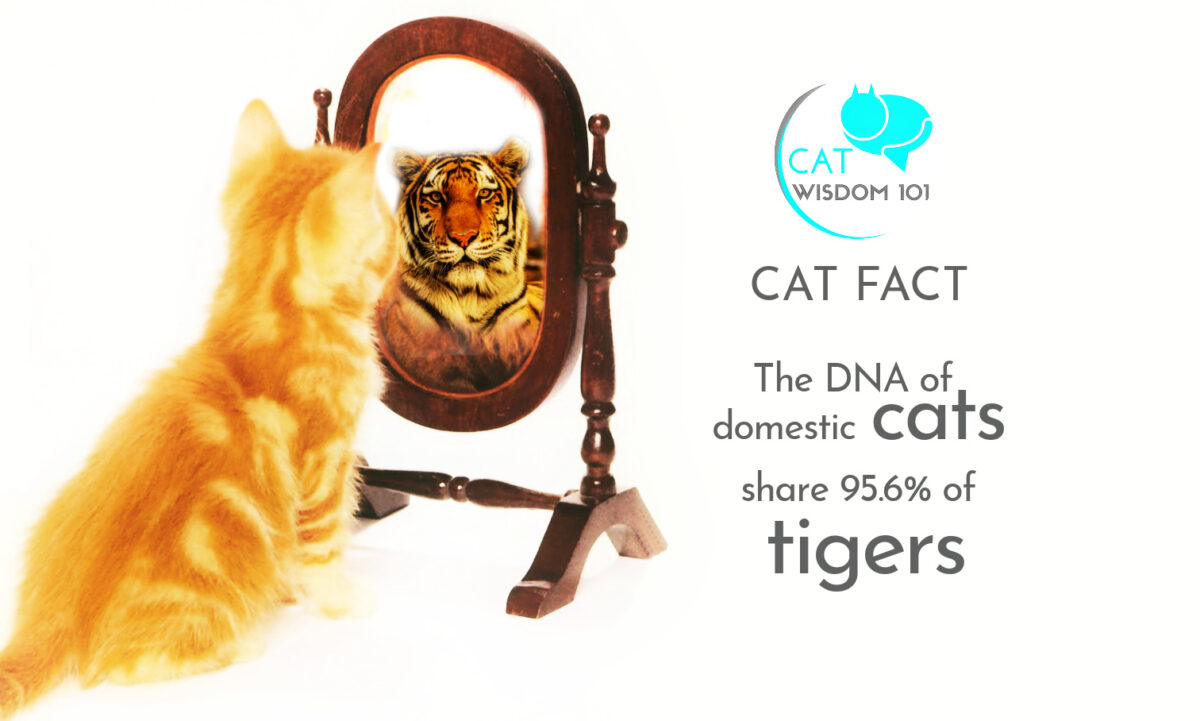
- Unlike most other mammals, the cat genome shows virtually no evidence of inbreeding over the past 100,000 years or so.
- Around 22-24 genetic mutations differentiate domestic cats from their nearest wildcat relatives, mainly affecting behaviors like docility.
- The Y chromosome in male cats is one of the smallest of any mammal, comprising only about 700 kilobases compared to 60 million for humans.
- Genome studies show the Siberian breed separated from other domesticated cats around 1,000 years ago, making them one of the oldest domesticated lines. L
- Cats have one of the smallest nucleoli (dense part of the cell nucleus) of any mammal, measuring only 1-2 micrometers across.
- The cat genome is particularly streamlined, containing far fewer blind, non-coding DNA segments compared to many other mammals.
- Male cats inherit their orange coloring from their mother via an X-linked gene, which is why orange tabbies are predominantly male.
- The cat has 500 skeletal muscles (humans have 650). This is one of the reasons cats are so flexible and agile.
- Newborn kittens have around 245 bones, which fuse together as they grow into 230 bones in the adult cat skeletal structure versus 206 human bones.
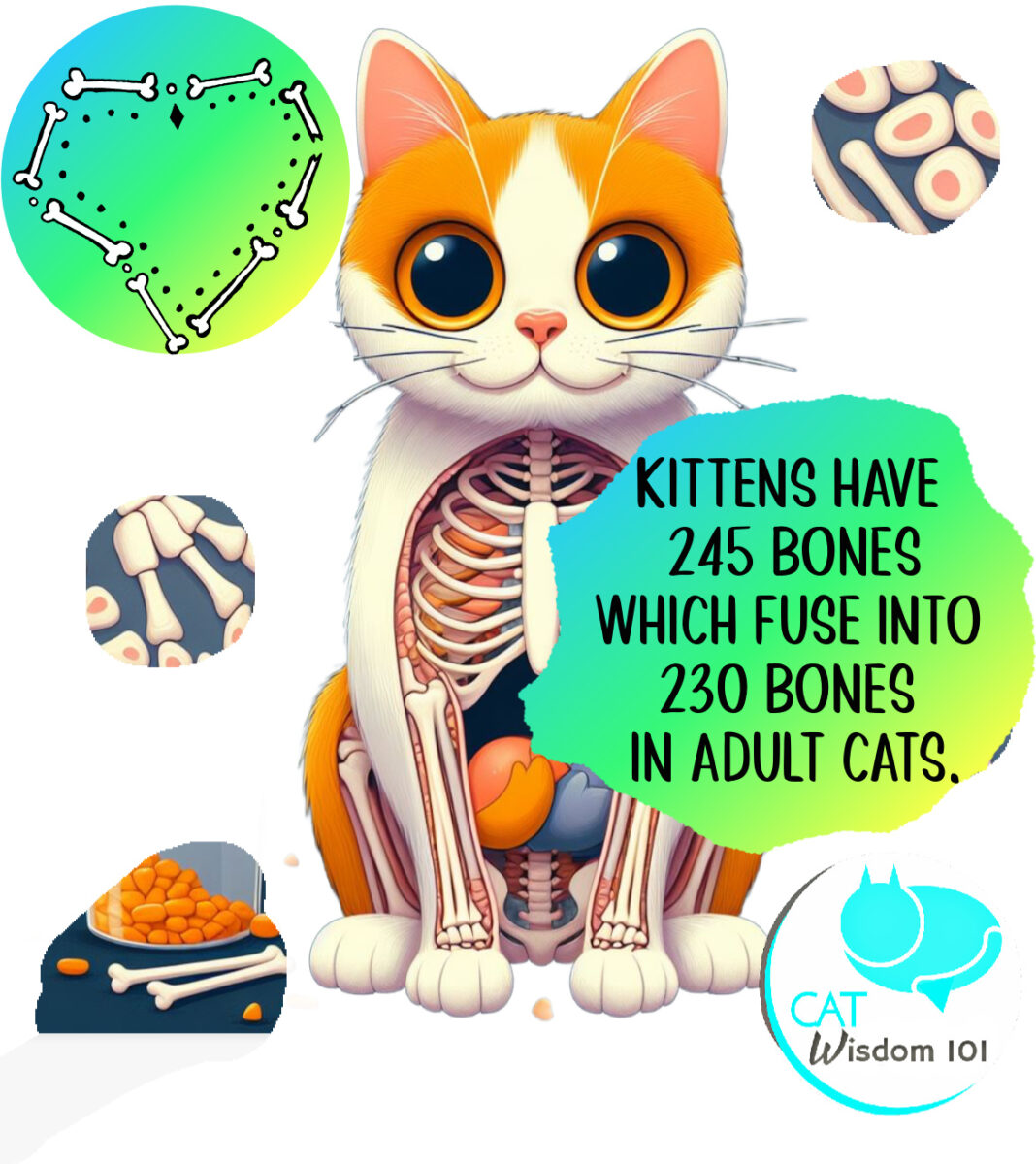
- A domestic cat’s non-retractable claws are effective tools for climbing, scratching, and hunting small prey. Their claws must be periodically removed or they curve into the paw pads.
- Cats have an incredible sense of balance aided by a rigid skeletal structure, flexible spine, and an amazing spatial awareness known as “righting reflex.”
- A cat’s field of vision is about 200 degrees as compared to 180 degrees for humans. However, they can’t see directly under their nose. They need about 6 inches.
- The cat is the only domestic companion animal not mentioned in the Bible.
- Cats can run at a top speed of approximately 31 mph over a short straight sprint, making them a formidable hunter of rodents and birds.
- A cat has five toes on each front paw, but only four toes on each back paw.
- A cat’s heart beats nearly twice as fast as a human heart, at around 110-140 beats per minute.
- Cats have the ability to drink seawater through highly efficient kidneys able to filter out salt. This ability is thought to have evolved from their desert ancestors.
- Cats don’t have typical “blind spots” in their eyes. Instead they have a steady panoramic view of the world.
- Cats are one of the few mammals that have a dedicated purr vocalization made by vibrating bones in their throat.
- A cat’s carbon footprint is about one-third that of a medium-sized dog over the course of a year.
- Cats have fewer trichromatic vision cones in their eyes that allow humans and some other animals to see a full range of colors. Their color vision is most attuned to blues and yellows.
- The only cats that are truly tamed are the modern day house cats. All other felines like lions, tigers, and leopards are not domesticated.
- Cats lack the specific brain enzyme that allows a sense of sweetness to register. This is likely an evolutionary advantage as most sweet foods contain little nutritional value for felines.
- Cats can’t taste sweetness due to a mutation in a key taste receptor gene. This is why cats tend to avoid sugary foods and drinks.
- Cats have fewer tasting buds than humans – about 473 compared to our 9,000. However, their sense of smell is much better than ours.
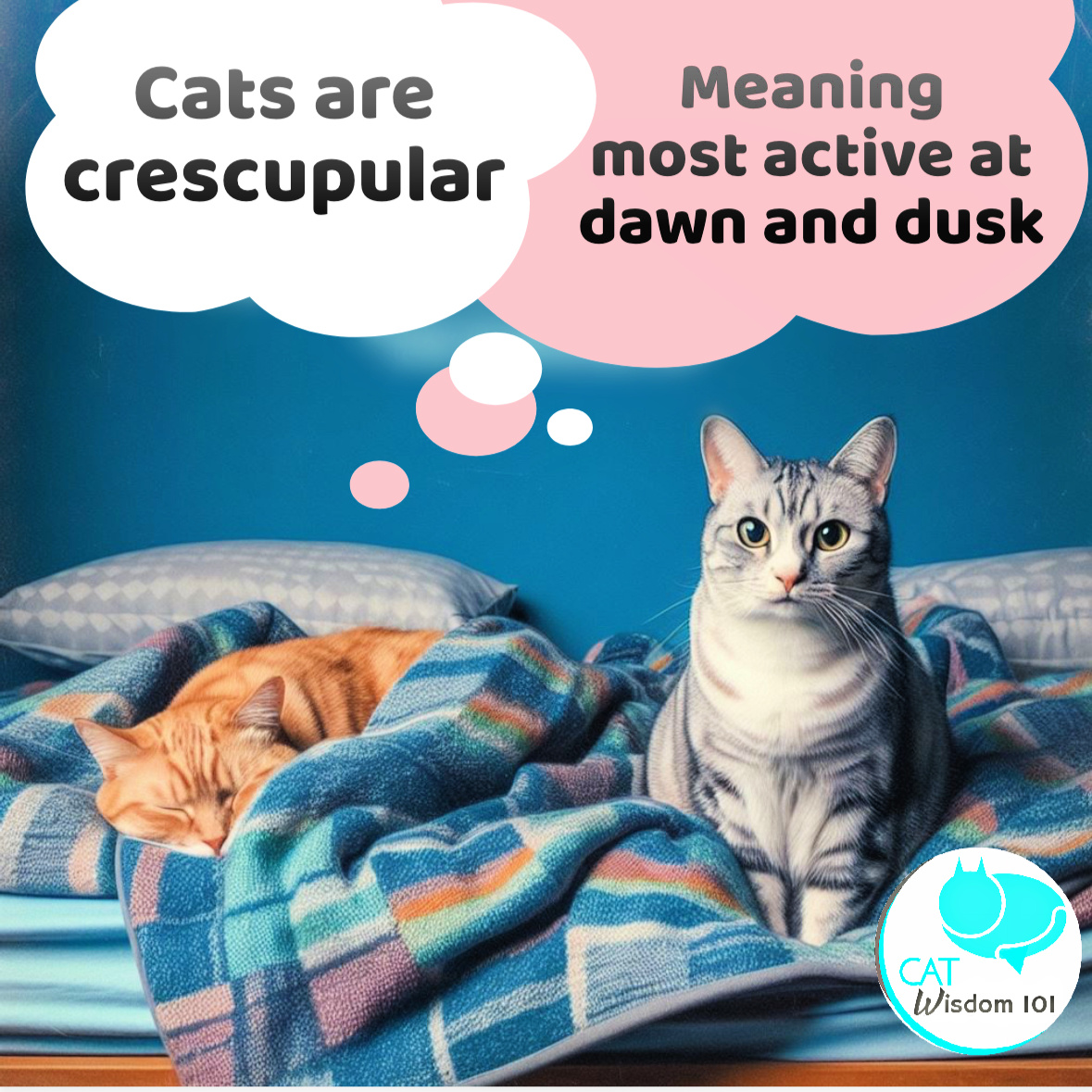
- Cats are crepuscular, meaning they are most active at dawn and dusk. This traces back to their evolution as both predators and prey.
- Cats can rotate their ears 180 degrees and their neck tendons are elastic allowing them to spin their heads around in a near-complete circle.
- A cat has 32 muscles in each ear allowing them to swivel, tilt and rotate to pinpoint sounds precisely.
- The cat’s nose is ridged with a unique pattern, just like the human fingerprint. No two cat noses are alike!

- Cats conserve energy by sleeping up to 16 hours per day on average. Older cats can sleep as much as 20 hours!
- Cats make over 100 different vocal sounds while dogs only make around 10. They meow to communicate with humans but use other sounds with other cats.
- In ancient Egypt, killing a cat was a crime punishable by death. Cats were so revered they were even mummified.
- Like camels, cats have free-floating shoulder blades that assist with climbing, running, leaping and squeezing through small spaces.
- A cat’s tongue is covered in tiny backward-facing hollow papillae that act like a brush to groom their fur. These papillae contain keratin which makes the tongue as rough as sandpaper. Cats are able to keep themselves so clean.

- Cats have an extra organ that allows them to taste certain proteins and acids – it’s called the Jacobson’s organ and it’s located along the roof of their mouth.
- Cats are obligate carnivores, meaning they require nutrients found only in animal flesh to survive. Their bodies can’t produce certain nutrients themselves.
- A cat’s jaw can’t move side-to-side, only up-and-down for biting. This is one reason why cats can’t chew large pieces of food like dogs can.
- Cats have up to 24 whiskers on each side of their face that are finely tuned sensors for feeling their surroundings, detecting subtle changes, and communicating mood
- Cats don’t have a sweet tooth because they lack the gene that allows mammals to taste sweetness. Instead, their taste buds gravitate towards meats and foods rich in protein and fats.
- A cat’s brain is biologically more similar to a human’s brain than it is to a dog’s. Both humans and cats have identical regions in their brains that are responsible for emotions.
- Owning a cat has been linked to a reduced risk of suffering a heart attack or stroke by nearly one-third.
- A cat can jump up to 5 times its own height. This is thanks to their powerful hind legs and lightweight bone structure.How High Can A Cat Jump?

- The cat’s claw has a unique curve and groove that allows them to keep their claws razor-sharp. Their dewclaw on the inner side mimics a thumb for gripping.
- Cats have scent glands on their face, paws, and tail that they use to mark their territory by bunting objects and areas with their heads.
- Cats lack a key enzyme called glucuronyl transferase that breaks down phenols in their liver. This is why essential oils containing phenols like thyme can be toxic.
- A cat can’t climb head first down a tree because every claw on a cat’s paw points the same way. Their claws are designed to dig in when they climb up.
- Cats have up to 28 muscles that control the outer ear alone. This allows them to swivel their ears 180 degrees to better pinpoint sounds.
- Cats make very little noise when they walk around. This is because their soft paw pads allow them to sneak up on prey without making noise.
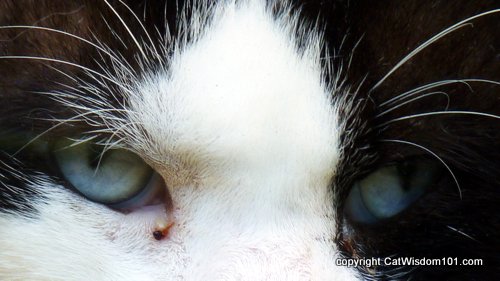
- Cats have the largest eyes relative to their head size of any mammal. This gives them excellent peripheral and night vision for hunting Their vertically slit pupils also allow them to see well in low light.
- Cats have better memories than dogs. Tests have shown they can remember up to 16 hours longer than dogs before forgetting an event.
- Cats have almost twice the amount of neurons devoted to analyzing smells compared to humans. Their sense of smell is fantastic.
- Cats are nearsighted, but their peripheral vision and night vision are much better than that of humans.
- Cats have a longer-lasting body temperature rhythm than most mammals, with their temperature peaking at evening and dropping in the morning.
- A cat’s brain is more similar to a human’s brain than that of a dog. Both humans and cats have identical brain regions for emotion.
- The cat is the only domesticated species in the fertile Crescent not mentioned in Babylonian creation myths.
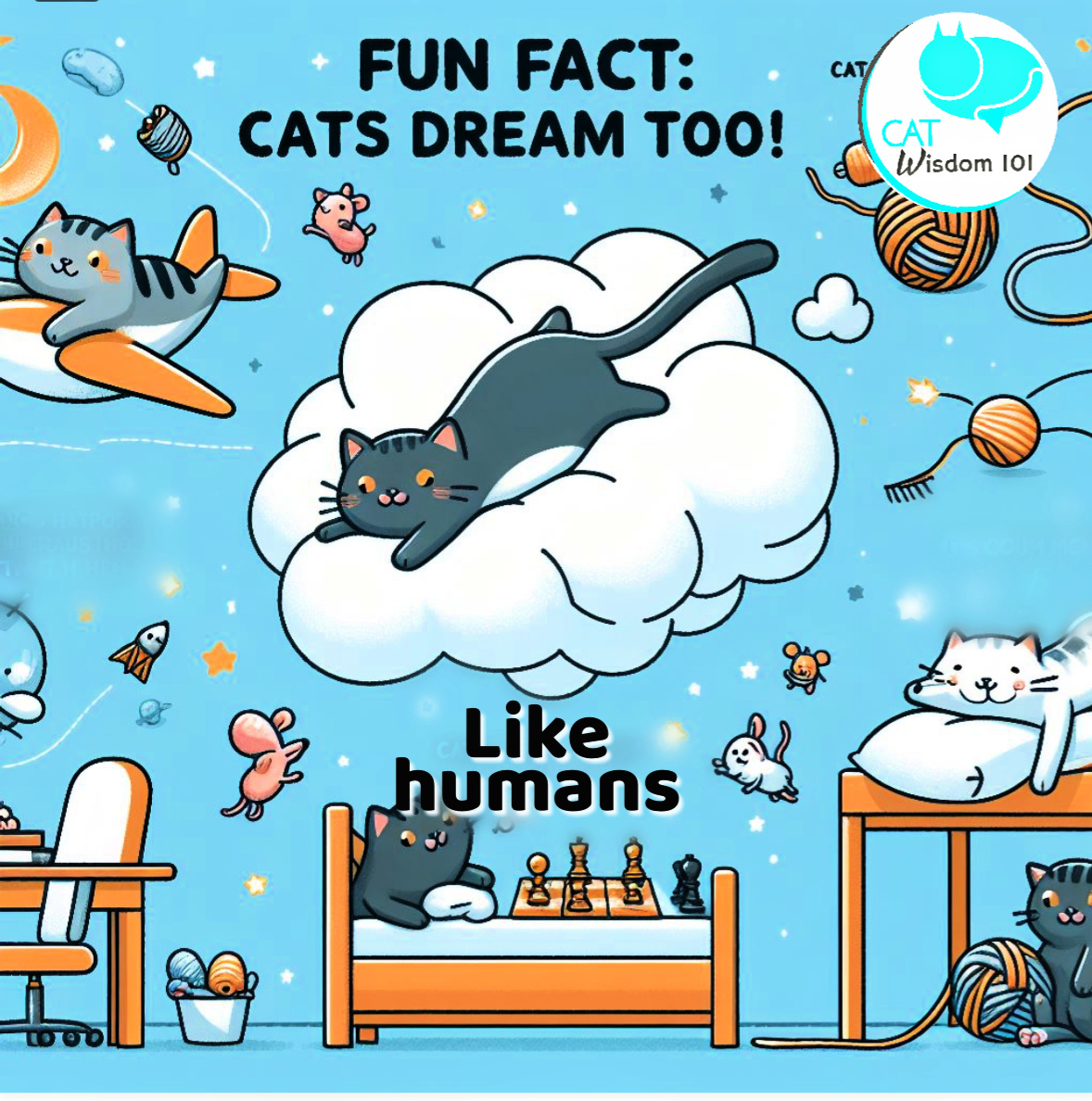
- Cats are obligate nasal breathers which means they can’t breathe through their mouths like humans can.
- The cat family is one of the few animal families whose eyes open fully at birth. Most are born with their eyes closed.
- An unspayed female cat can produce up to three litters per year with an average of four kittens per litter!
- Cats have almost twice as many neurons in their cerebral cortex as dogs, likely helping their cognitive abilities.
- A cat’s whiskers are deeply embedded in their muscle structure and can sense even the smallest changes in the environment.
- Cats have a longer gestation period than dogs at about 63-65 days.
- Cats lack a specific enzyme (alpha 1,6 glucosidase) in their metabolic pathway that allows them to digest and use carbohydrates effectively.
- A cat righting reflex is the amazing ability to land on their feet nearly every time after a fall, made possible by a flexible backbone and balanced righting mechanism.
- The roaring “voice” of big cats like lions and tigers comes from an elongated lip structure that domestic cats lack. House cats can only purr and meow.
- Cats have an extra rigid collar bone that attaches their shoulder blades to their forelimbs, giving them the ability to squeeze through tiny spaces.

- Cats sweat only through the pads on their paws and have few fat insulation, so they can easily become overheated and dehydrated.
- The domestic cat is the only species able to hold its tail vertically while walking, made possible by the precision of its muscle control.
- Unlike humans, cats do not have a region in their brain that integrates all senses into a single perception of “self” or self-awareness.
- Cats have a third eyelid called the nictitating membrane that helps keep the eye lubricated and protected when awake.
- The cat genome contains about twice as many genes for olfaction (smell) compared to the human genome.
- Cats are among a small group of mammals sharing the exceptional ability to see in ultraviolet light, which humans lack.
- Grown cats have 30 teeth (12 incisors, 10 premolars, 4 canines, and 4 molars), while kittens have about 26 temporary teeth designed for tearing meat.
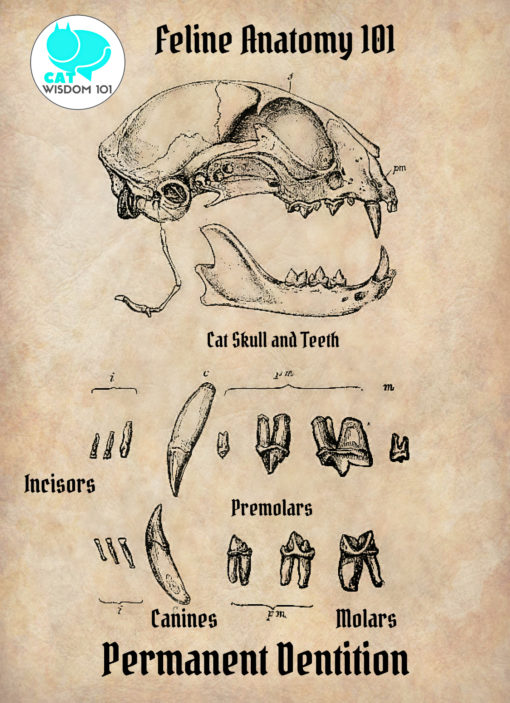
- Cats have a better sense of smell than dogs due to having twice as many scent receptors – about 200 million compared to 100 million for dogs.
- The meow is an exclusively cat-to-human communication – adult cats do not meow at each other, they have other vocalizations like yowling.
- The cat family is one of the only groups where offspring are born with blue eyes which change color as they develop.
Some famous feline feats
- The richest cat in the world is a cross-eyed moggy from Blackpool, England named Missy who inherited £13 million ($20.3 million) from her owner in 2022.
- The loudest purr by a domestic cat is 67.7 decibels, set by a cat named Merlin in 2015. That’s about as loud as a shower running.
- The longest cat in the world is a Maine Coon named Stewie, measuring 48.5 inches (123 cm) from the tip of his nose to the end of his tail bone in 2013.
- The shortest cat on record is a female munchkin cat named Cye who measured just 5.35 inches (13.6 cm) tall in 2014.
- The cat with the longest tail is a Maine Coon named Cygnus, whose tail alone measured 17.5 inches (44.5 cm) in 2018
- The most expensive cat purchase was a Bengal/Asian leopard cat hybrid bought for $41,935 in 2022.
- Stubbs, a ginger cat, was the mayor of Talkeetna, Alaska for 20 years from 1997 to 2017 after being elected as a joke that grew popular.
- The oldest cat to give birth was a Siamese named Scrawny who had kittens at age 30 in 1970.
- The heaviest cat on record was a tabby named Himmy from Australia who weighed 46.8 lbs (21.2 kg) in 1986.
There are of course hundreds of more fascinating cat facts but I hope this is a good start since March 28 is Respect Your Cat Day. Now you have more reasons to do so!



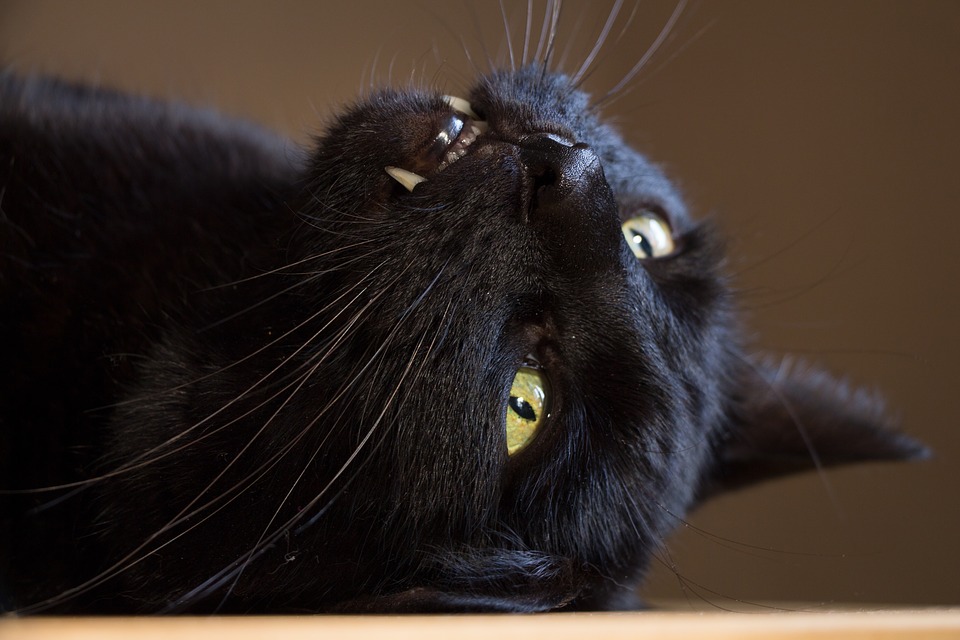


9 Comments
meowmeowmans
As often happens when we visit you, we learned some new things about cats today! Hope you are well, Layla!
Memories of Eric and Flynn
Those were very interesting facts. Many I already knew, but some I didn’t. I know cats are not supposed to be able to climb down trees face first, but Flynn could, sometimes a bit faster than he intended. Eric couldn’t even come down backwards very well. Many times I had to go to his aid with my trusty dustbin lid for him to jump down onto.
Layla Wilde
Oh, that’s funny about the bin lid.
Brian's Home ~ Forever
Those were really, really interesting and I enjoyed reading them.
Layla Wilde
It’s always my pleasure to share something different.
Marlene
Wow, I knew about some of these facts but so many I didn’t!
Layla Wilde
Marlene, thanks! There were surprises for me too.
Amy Harlib
FASCINATING AND INFORMATIVE COMPILATION! THANK YOU!
Layla Wilde
Thanks so much, Amy!